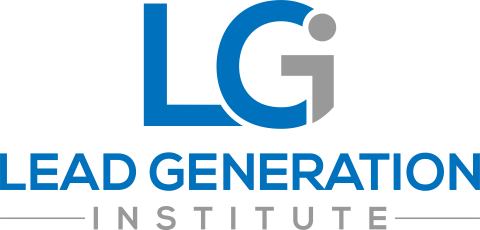When it comes down to it, B2B marketing is often about generating leads for the sales department. This need for lead generation is even more prevalent in a demand-driven culture, where marketing has a direct impact on revenue. There’s an undeniably large number of lead generation methods, each with its own effectiveness in terms of both the quantity and quality of leads generated.
Weak methods will often result in friction between sales and marketing, as low-quality leads don’t serve anyone well. If you invest too much of your marketing budget on those types of leads, and the sales department only ends up ignoring them, this interdepartmental relationship will stand to suffer even further. Marketing automation and lead scoring, however, can help improve the quality of your leads, which will satisfy both the marketing and sales department for the benefit of both.
What is Lead Scoring?
Though it is not a new concept, lead scoring is something implemented by few organizations around the world. Nevertheless, it’s an incredibly useful tactic that helps companies rank their prospects based on the perceived value each lead represents to the organization.
In other words, lead scoring is a constantly-active filter that’s available for all leads, regardless of their position throughout the sales funnel. Lead scoring is not a practice only applied to specific leads, and it should be observed across all leads that are generated. It also requires regular assessment and improvement to ensure its accuracy and effectiveness.
It exists as a means of creating a quantifiable sense of how well the interdepartmental marketing-sales process is working, ranking leads coming in and assigning them priority levels. The so-called “gut feeling” is eliminated from the equation – everything will be strictly based on the numbers.
No longer will your leads be clumped together based on perceived similarities. Each of them will receive their own score and individual category. What’s more, every B2B organization that uses lead scoring will have to tailor the practice to its own needs and definitions of “quality leads,” even if they are following a specific model.
In the words of David Lewis, Founder and CEO of DemandGen International, “Lead scoring is not a crystal ball to tell you whether or not a prospect will turn into a customer- it’s a tactic to make the sales team more efficient using qualification and prioritization.”
Why Is Lead Scoring So Important?
Did you know that 70% of leads and sales are lost because of inadequate follow-up practices? Imagine the possible growth opportunities if most of your leads would follow through to at least one purchase! Ranking them based on this probability, as well as others, will surely help you make that happen, and this is where lead scoring comes into play.
In fact, 68% of highly effective marketers consider lead scoring as a top contributor to their revenue with a 77% higher lead generation ROI than their non-lead-scoring counterparts. And according to an Aberdeen Research, companies that successfully implement lead scoring see a 192% higher average lead qualification rate than their counterparts. These are just a few of the statistics that show the benefits of lead scoring.
Another trend, however, indicates that between 66% to 81% of businesses still don’t practice lead scoring. And when it comes to B2Bs in particular, only about 21% use some form of lead scoring, which presents an excellent opportunity to get a head start on the competition.
The benefits of lead scoring will number well into the dozens, from increasing engagement and saving time by not chasing low-quality leads that end up nowhere. This is, of course, possible by having a much deeper understanding of which leads best fit the qualifications of your highest converters and then regularly communicating with them.
It should also go without saying that the relationship between your sales and marketing teams will only stand to gain. When a clearly defined lead score model leads the process, both departments will be working towards the same goal, which will allow sales to identify which leads are the most beneficial, while marketing can generate content specifically tailored and targeted towards nurturing those high-quality lead groups.
Your sales team will no longer have to spend their precious hours chasing leads that don’t convert. A lead scoring system will work as a filter that will do most of the heavy lifting in this regard. The overall sales cycle will be drastically shortened when using the right kind of scoring strategy custom-made for your organization.
And even though there is no one-size-fits-all approach to a perfect lead scoring system, the example below will help you set the basis for one.
How to Set up a Basic Lead Scoring Strategy
When marketers rank their leads in order to determine their sales-readiness, they will use a lead scoring model or strategy. There are numerous types of lead scoring methods, each with their own benefits and drawbacks. That said, we’ll be focusing on some of them, in order for you to choose which one will make the most sense for your business.
At first, there are two main types of lead scoring:
- Explicit – which determines the fit of a potential lead.
- Implicit – which expresses the interest of a candidate.
Explicit Lead Scoring
Explicit lead scoring is based on the information you receive from the lead directly. This type of data is created from observable or, otherwise, collected information via online forms. It also takes into account demographic and firmographic scoring criteria that you determined via sales earlier on in the lead generation process.
Among the elements that make up an explicit scoring system are things such as job titles and roles in the decision-making process, years of experience, company, revenue growth, number of employees, location, industry, budget, etc.
The idea behind this scoring system is that certain leads with specific values or data sets will be more likely to convert than others. If, for instance, your company is selling marketing software, you may have better success if you’re scoring someone with a Marketing job title higher than you would someone who is in Support.
The benefit of an explicit lead scoring system is that it ensures your campaigns are targeting the right people. Explicit lead scoring will also help you find the decision makers who are in the best position to purchase your product or service. In addition, this explicit information can also help you determine the right kind of messaging to use throughout the sales cycle.
That said, you shouldn’t let yourself be fooled into thinking that this system is bulletproof. In fact, there are a couple of things you will need to look out for.
On the one hand, not everyone is entirely truthful when giving out this information. Some may exaggerate or embellish their buying authority or job roles, they may put fake locations or contact information. Second, it’s possible that the product’s user is also the buyer. Say, you are selling software used by developers and assume that developers are the ones making the decision, when, in fact, it’s the CTO. As such, it’s possible to overlook potential buyers simply because they don’t fit in the explicit lead scoring model you’ve created.
Implicit Lead Scoring
Implicit lead scoring revolves around the idea of tracking the various behaviors of people in order to determine their buying intent. These actions can include everything from visiting the website, looking at product and/or pricing pages, subscribing to the newsletter, downloading an eBook or whitepaper, attending a webinar or tradeshow, filling out a form, following the company on social media, etc.
When you set up such a lead scoring model, you will review all the actions a person undertakes and assign them positive or negative values accordingly. For instance, you assign a person 15 points for filling out a form, 10 points for downloading a white paper, 20 points for requesting a demo, 2 points for every webpage they visit, 3 points for opening an email, etc. Also, you can subtract 15 points if they don’t interact with your website for a month.
While this model is great for monitoring people’s interest in your product, it also has some potential drawbacks. For example, if someone downloads an eBook or looks at the pricing page, doesn’t automatically mean they’re a good fit for your company. Also, your offers may not resonate with your audience enough for the majority to actually reach a high-enough score.
Regarding email scoring, spam software has become very aggressive and often triggers what we call false positives. Meaning the person receiving the email didn’t actually click on any links or download any assets the spam software triggered that false positive. We recommend you focus your lead scoring efforts to your website.
Co-Dynamic Lead Scoring
Now, with all this in mind, lead scoring doesn’t have to be exclusively implicit or explicit. A co-dynamic lead scoring model will pair both types of information for a more comprehensive view. With such a model, you can see who is a good fit for your company as well as exhibit a high interest in your product.
Creating a model that combines both implicit and explicit information may be more complicated but it will allow you to better focus your attention and efforts and will help increase conversion. Say, for example, you have a lead that fits the right industry and you award them 3 points. If that person has also visited a webpage, you give them an additional 2 points, and if they downloaded a white paper, you give them a further 10 points. In addition, you will also take into account their position. If they are a VP, you give them 5 points, but if they’re a manager, you only offer 3 points.
It’s important to remember that the model you create should reflect the needs of your organization. As such, there is no one-size-fits-all approach. This also means that, whatever model you choose, you will need to monitoring, review, adjust, and optimize it over time.
Some companies prefer to assign a lead score of A,B,C,D, orE with A being the best lead vs. other companies who prefer to use a simpler version of scoring i.e. Hot, Warm, Cold and yet other companies use a numeric value of 0-1000. The reasoning for using an actual number takes into account how a sales rep would react to a lead score of 925 points vs. a lead flagged as A, B or C or Hot or Warm etc.
For more information on lead scoring, please feel free to contact us directly or subscribe to our newsletter.




